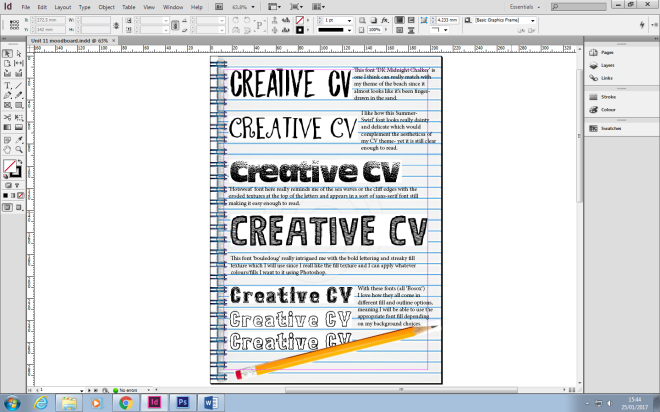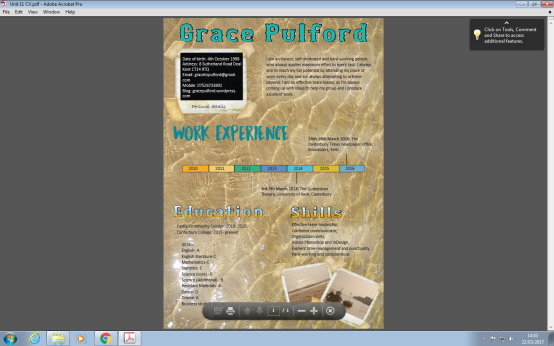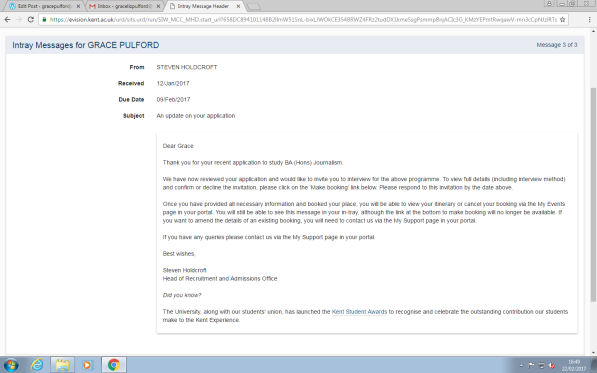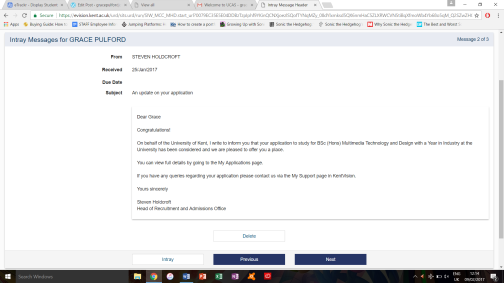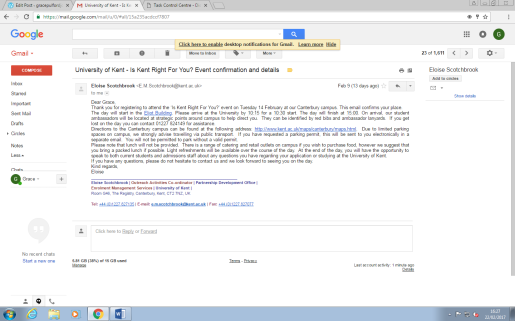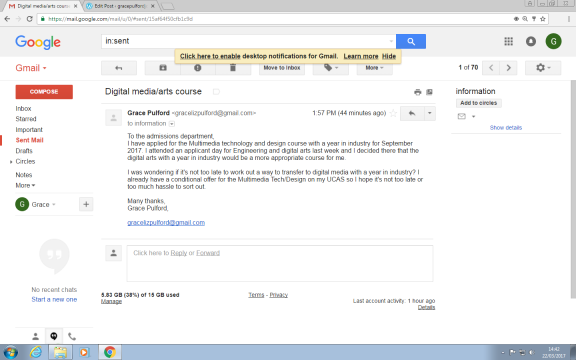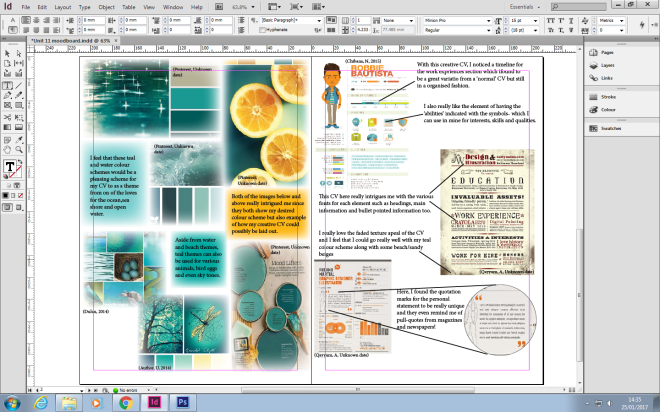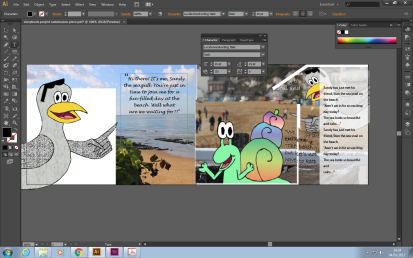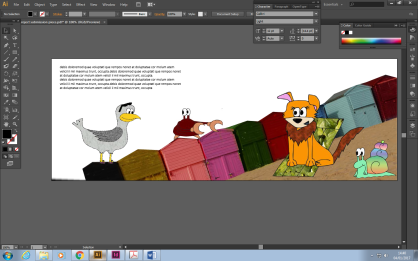Unit 12 Research diary and findings
Unit 12 Research diary and findings (Unit 12 1.1/2.1/2.2):
How the Sonic the Hedgehog franchise has changed over time:
(Unit 12 2.1)- This is my main topic which I wish to carry on for my Final Major Project and I will research 3 different media products that cover the information required for my project. These products are:
Online web pages, magazine articles and video sources. (Unit 12 1.1)- I will be analysing in depth the context of the source such as the influences and period of time that influenced it; skills and techniques used to produce it which could aid me in my Final Major Project; the audience for the product/information and comparing similar products and sources based on content, production methods and context.
Three media products (Unit 12 1.1)
Online web pages:
http://www.retrojunk.com/article/show/5057/growing-up-with-sonic-the-hedgehog-1991-2016
This source outlines, from the perspective of someone who grew up with the very first Sonic genesis title, how the series has changed from one early game at a time to the later modern games in both positive and negative ways. (Unit 12 1.1)- For this article it has been written by someone who has had first-hand experience with the very first Sonic the Hedgehog titles which I found really fascinating to read about regarding his views and experiences. I also found it really interesting to read about how he felt the games had changed since the early releases. For instance, the writer comments ‘I was gripped – and in all honesty still am – with the colorful graphics, the fantastic music and the speedy gameplay’ (Retrojunk.com, 2016) for the first game and he seems to indicate strong nostalgia throughout the article as he constantly refers and compares to the first 2-3 Sonic titles ‘And the music in this game! I still have it on my iPod today.’ (Retrojunk.com, 2016) and ‘Sonic never disappeared for me in the between years – I kept playing the first four games (especially Sonic 2 and Sonic 3 & Knuckles, but also Sonic 1 and Spinball)’ (Retorjunk.com, 2016). This is clear evidence, alongside the various critical reception at the time (Lachel, 2014) that these are the features that made Sonic a gaming icon at the time and will never be forgotten.
(Unit 12 1.1/2.2)- One thing I like about this article is that it contains screenshots of the game and era it’s talking about such as the Genesis games, 3D era and specific consoles and the later 3D Sonic era. It also gave me the possibility to try adding video clips alongside my time-lapse drawings (depending on the franchise area being discussed) to add some extra creativity. If, however, this doesn’t work or if I am short on time, I will simply use these as a template for my drawings or to develop ideas for them.
(Unit 12 2.2)- I feel that elements from this article would be great for a something like a final conclusion on what has made the mascot what he is today, also as a nice way to touch the audience’s hearts a little. However, I will most likely be using a combination of this article with critic reviews since this is written in the perspective of the writer and not as a straight-forward fact piece. For my video piece, this will limit the use of this article slightly from an information side but I could use it to show any relationship between what players/fans and critics’ views on the franchise.
What made the SEGA mascot stand out during the 1991?
http://www.defunctgames.com/reviewcrew/26/sonic-the-hedgehog-what-did-the-critics-say-in-1991
This online source here coming from Defunct games and I found it really handy because it had a section featuring nothing but past reviews on what critics thought of the original Sonic the hedgehog title from 1991. (Unit 12 1.1)- I decided to use this source because I wanted to see if there were any similarities between critics’ views and (most importantly) what they believe made the character and game stand out from all the rest at the time. I learned from my findings here that many of the reviews give immense praise towards some of the same characteristics. For instance, ‘Music, graphics and control are spectacular’ (Mega Play, Lachel, 2014) ‘sonic the hedgehog is a blinding game. The graphics are great and the sound bops along infectiously. Every level is well designed and packed with features, and the whole thing is a hell of a good day’ (Mean Machines, Lachel, 2014) and also (from the same mega Play magazine), “Sonic will put the Genesis ahead of the pack! The graphics and sounds are spectacular and the technique is truly top class. The game suffers low difficulty but otherwise is a winner” (Mega Play, Lachel, 2014). (Unit 12 1.1)- Looking at these reviews, it’s clear that the first Sonic Genesis title had everything positive to offer that no other game had during the 1990s, and I think this fits in perfectly with what made Sonic the Hedgehog the icon he is today linking to his appearance on Nintendo games/platforms in the future. (Unit 12 2.2)- If I was to apply this element into my FMP video I would easily be able to have the Nintendo mascot appear in it with reference to the early competition, making games for the Nintendo platforms and even bring the Mario & Sonic Olympic games series into it. However, my main danger here is mainly trying to cram too much information into my video and therefore making it confusing to understand the content. My main solution here would be to prioritise my information and select what would be suitable in summary format and a more detailed explanation.
How the relationship with Nintendo and Mario affected the franchise:
This source here explains in great detail how Sonic’s relationship with Nintendo mascot Mario has changed over the years and impacted the franchise. (Unit 12 1.1)- First of all, I really admire how the article begins immediately with the rivalry between the two companies in the early 90s (Shea, 2016) and how this rivalry affected both mascots throughout this period of time. For instance, according to Sonic series producer and current head of Sonic Team, Takashi, Iizuka, “There were so many fans of the Mario series and then we came out with Sonic, who was this character that was cooler, had this visual style where he was bright blue, he played faster, the controls were better – it was a tighter game.” (Shea, 2016) (Unit 12 1.2)- This piece of information would be of great use for appearing in my video piece since it comes from someone involved with the creation of the franchise to make it more personal and engaging to the audience- plus the opportunity to create some engaging animation to accompany it in my video. This online article later goes on to explain how SEGA had been defeated in the hardware market and had been forced to become a third-party development company (Shea, 2016). According to my findings, the franchise was impacted from this point even more, as well as specific development team members who ‘were used to creating for a single platform’ (Shea, 2016). However, another quote from the series creator is inserted, “It’s very sad that Sega’s hardware business was cancelled, but this allowed Sonic to run over a variety of different platforms. This made it so more people were able to play and enjoy Sonic games than ever.” (Shea, 2016) (Unit 12 1.1/2.2)- Looking at this piece of information and what the series creator has said, it indicates to me how strong Nintendo were with their mascot during the late 90s for SEGA to leave the console market and it links with one of my magazine articles that states the obstacles the developers came across when developing the very first Sonic 3D title. All of them link well together and cross over each other which I could include in my video piece. Since they link well together I will be able to mention little bits of each source without going overboard but still getting across what I want to. (Unit 12 1.2)- The interviewer’s quote here inspires me by not only how they are planning to take the Sonic the Hedgehog franchise forward but it’s the perfect link to me to move on to my next topic of discussion for my video piece.
Magazine articles:
How the transition from 2D to 3D affected the franchise:
Using a magazine as one of my media products here, I found an article in an issue of Retro gamer, where the ‘impact on the original Mega Drive platform games’ (Thorpe, 2016) is discussed- including how 3D gameplay has impacted the series with reference to the original 2D titles. (Unit 12 1.1)- This article and section of the magazine was in relation to the 25th anniversary of the Sonic the Hedgehog franchise and so I found it a really useful resource because it contained a mixture of factual information (the main articles) but also interviews and pull-quotes from people who have worked on the very first Sonic titles and who still work for SEGA and Sonic Team. I think the pull-quotes are a great way to engage the audience into the article more and possibly understand more of the hidden details of the topic via personal experience from those involved. ‘Even now when I think about creating a new game, I always try to think of applying the good part of 3D and good part of 2D to be applied to that new game’. (Iizuka, Thorpe, 2016). I also really like how this handy piece of research it covers the 3D era and how ‘in recent years, Sonic Team have been using the Mega Drive games as reference material with increasing frequency’ (Thorpe, 2016). (Unit 91.2/2.2)- Because of how the magazine contained detailed history of the original Genesis Sonic games and how the information surrounding this crossed over nicely with the 3D era, I feel that it has given me a number of ideas for what I could research further for my FMP video such as: how the 3D games have had the classic 2D charm still applied to them and further research into how the franchise has catered to new target audiences and fans from the very beginning!
(Unit 12 1.1)- One other piece of vital information caught my eye which I came across here. This was to do with the target audience and demographics. According to my findings in the Retro Gamer magazine, I learned that an increase in demographics have had a huge growth on the games industry as a whole, let alone just the Sonic the Hedgehog franchise (Thorpe, 2016). My findings also taught me that around five years or so prior to the launch of Sonic 2, gaming experiences seriously depended on where and what region you lived in (Thorpe, 2016) compared to today’s ‘same-day global launches and region-free consoles’ (Thorpe, 2016). Not only does this source generate a very vital piece of information about how the franchise has changed over time but it also allowed me to expand upon WHO my target audience is for my project is the first place. Obviously, this will consist of Sonic the Hedgehog fans who have been fans since the first release and who are just getting into the games/TV show(s); gamers in general and even those who never had video games or consoles during their childhood. (Unit 12 2.2)- I feel that, with this piece, along with the other areas of change I will be investigating, I can ensure that my FMP video piece will cater to everyone within my target audience.
(Unit 12 2.1)- Whilst researching for more information on the transition from 2D to 3D I came across another magazine. This magazine was ‘SEGA Archives’ and was entirely devoted to the history of classic games from the company- Obviously including Sonic the Hedgehog. The sections based around Sonic the Hedgehog dealt with the overall history of the franchise and I came across interviews from various people involved with crafting the SEGA mascot into the world of three dimensions. Such interviews state: “I wanted to maintain the look and feel of the 2D Sonic from Sonic 3 for Sonic x-treme. We had not yet seen any representations of Sonic in 3D, so it was very exciting to pave a new ground.” (Senn, SEGA Archives, 2016). However, the interviewee also provides some of the challenges that were faced during the 3D process: “Not having any idea of how large a bite we were trying to chew, the intention was to combine speed, puzzle-solving, ring-collection, bonus rounds, special rounds, enemies, bosses and some new gameplay elements nobody had ever seen before. In hindsight, it might have been wise to attempt to re-create the basic elements of the 2D games in 3D, which might have allowed us time to polish the game before finishing and releasing it.” (Senn, SEGA Archives, 2016). (Unit 12 1.1/2.1)- From this information, I found it really fascinating to see both sides to the story in the way that the person has given us the positive intentions of the 3D games but also the challenges they faced during the development and this expands even further to discuss the struggles with specific games regarding the development issues and competition against other consoles: ‘Up against the spectacularly popular PlayStation, the Saturn really needed every advantage it could get, and particularly after the world-changing brilliance of Super Mario 64, everyone expected Sonic to make the transition from pixels to polygons in style.’ (SEGA Archives, 2016). I feel that if I could add elements of this into my FMP as a time-lapse video or other visual source it would provide more in-depth context topic but I could adapt my video piece to portray it in a way that my target audience can engage with but, especially, relate to.
(Unit 12 1.1)- After reading the development section of the SEGA Archives magazine, I came across the in-game changes that would continue throughout the franchise: for instance, starting with Sonic Adventure (SEGA Archives, 2016) ‘incorporating many contemporary ideas such as vast explorable areas in addition to its linear, rollercoaster-like levels.’ (SEGA Archives, 2016). This area of change to the Sonic franchise seems to link really well with the early 3D games and also provides another pathway for investigation: the divided fans. Although a specific game is the main reason for this matter, it’s an issue that has carried on into the later Sonic games. The main cause of concern for fans was the ‘extensive cast beyond Sonic himself’ (SEGA Archives, 2016). The character issue I feel is another area I could investigate in my video piece and already has me forming ideas as to how I could display this via a time-lapse drawing or other drawn animation piece.
What games had the most impact to the franchise over time (both positive and negative)?
For this section, I will be using a mixture of primary and secondary research since I will be gathering views and opinions from those who have knowledge and/or who have played games that have impacted the franchise. Firstly, I will be investigating various Sonic the Hedgehog games out there that have influenced the franchise in both positive and negative ways. This will include: the very first titles and how 3D games have varied (Which I have already researched) to the point of having almost a reputation of ‘ranging from abysmal to brilliant’ (SEGA Archives, 2016) according to SEGA Archives magazine. (Unit 12 2.2)- However, I will mainly focus on one or two games maximum to save time on the overall video duration yet be able to discuss their impact to the franchise in as much detail as possible. One of which is ‘Sonic the hedgehog (2006)’. (Unit 12 1.1)- The reason for this is because this game according to many critic reviews and fans is considered ‘one of the worst Sonic the Hedgehog games in the franchise’ (Sonic Retro, 2017). This is due to ‘heavy time constraints to launch Sonic ‘06 on the Xbox 360 before Christmas’ (DidYouKnowGaming?, 2016) as well as the development team being split in half to work on the Sonic 2006 game and the other to ‘develop a Wii game from scratch’ (DidYouKnowGaming?, 2016) and the director for the 2006 title working on the new Wii title (Sonic and the Secret Rings) (DidYouKnowGaming?, 2016). As a result of the pressure to have the game released by Christmas, the final game ‘quickly became one of the most infamous bad releases a AAA publisher had ever put out.’ (andrearitsu, 2015) with ‘utterly unhelpful camera angles, innumerable graphics glitches’ (Fahey, R, 2006) as well as Sonic’s controls being ‘twitchy, unforgiving and unpleasant’ (Fahey, R, 2006). All of this feedback is coming from a working game reviewer/critic too! (Unit 12 1.2)- From researching one game which has impacted the franchise in a painful and unforgettable way, this will only give me even more to talk and further ideas for my FMP piece such as: how it changed the Sonic franchise, art and animation ideas to portray it as well as further experience and opinions on it via primary research.
(Unit 12 2.1)- It should also be worth noting that after what Rob Fahey describes as ‘a malformed abortion of a game’ (Fahey, 2006) the franchise has been known to release some successful games both critically and to fans. For instance, Sonic Colours seemed to show a potential for the future of the franchise (Andrews, 2014) with merging its speed and platforming (Andrews, 2014). (Unit 12 1.1)- Alongside this, Sonic Generations- released in 2011 meant even further improvement for the franchise (Andrews, 2014) as the 20th anniversary title combined 2D and 3D play styles that ‘worked like a charm’ (Andrews, 2014) and brought both classic and modern Sonic together to celebrate the two decades of existence. (Unit 12 1.1)- Looking at this source examining the successful Sonic generations and the classic Sonic, it really proves to me what a great deal the very first Sonic the Hedgehog Games were back in the Genesis days and how they not only changed the gaming industry but also people’s memories of the mascot and getting into the whole franchise themselves. For many people, it could trigger nostalgia but for those who are modern gamers it caters to them as well. (Unit 12 1.2)- For my FMP, this is something that would definitely be worth bringing up as it would be perfect to ultimately conclude my hypothesis: how has the Sonic the hedgehog franchise changed? This would be visually through my drawings with an accompanying voice-over.
Online Videos/Documentary:
Overall history:
https://www.youtube.com/watch?v=VQCrrukJ8CA
This video source covers everything to do with the Sonic the Hedgehog franchise: explaining how Sonic stood out from other 1990s video games and how they had to leave the console market (Treesicle, 2014)
(Unit 12 1.1)- At the beginning of the video it explains to me simply and to the point that ‘video games at the time were blocky’ (Treesicle, 2014) and ‘notoriously slow’ (Treesicle, 2014) but tells us that Sonic’s ‘gameplay was smoother’ (Treesicle, 2014) and that ‘played faster’ (Treesicle, 2014) and a snippet of footage from the game(s) to provide evidence for this. (Unit 12 1.2)- This information would be of perfect use for my FMP animation or time-lapse as it will introduce how sonic became well-known across the world from the start of his Genesis days, as well as fulfilling one of my four subheadings for investigation for my FMP.
(Unit 12 1.1)- For the production of this YouTube video, it consists of character screenshots, fan made work (as the source isn’t from the rightful owners of the franchise) and game footage as evidence for information given. For example, when the video explains how ‘video games were blocky’ (Treesicle, 2014) it shows an example of video games that fulfils that statement and then shows example footage of how the first Sonic the Hedgehog game stood out from them. This also applies to the parts examining the Sonic the Hedgehog 2006 game as it showed screenshots to back up information about it and even, for some viewers, make it easier to understand seeing it visually. (Unit 12 1.2)- Although this video piece is a lot more casual and comical in style, it still ties in with my other research findings and delivers all the information that tick off my four main subheadings for investigation. (Unit 12 2.2)- I am really interested to use the examples of other 90s video games as they help to explain how Sonic was positively different perfectly. However, I will not be using existing footage from any of the games due to it not fitting in well a drawing-based video and I’m afraid it will remove a lot of the creative process for me and restrict my creative skills.
Overall history:
https://www.youtube.com/watch?v=Ym2ve5_YD60
This video source here also contains everything about the history of Sonic the Hedgehog including: the very early stages of the franchise’s development; how ‘Nintendo completely dominated the industry’ (kalinske, Kimplix, 2011), and how the Character/franchise was brought into the world of gaming and the transition from 2D to 3D with Sonic Adventure (Kimplix, 2011).
(Unit 12 1.1)- First and foremost, this source is a documentary and consists of voice overs from a narrator, footage from the Genesis and modern games where applicable. Probably the most important aspect of this documentary and for the benefit of my FMP is how it’s mostly made up of interviews from vital people involved in the franchise’s progression, including past CEOs of SEGA, character designers and music composers for the games. To me, this makes the source much more valid, official and will allow me to add professional quotes to my video piece. (Unit 12 1.1)- In terms of the historical context of this source, it immediately begins with telling us about SEGA’s arch-nemesis, Nintendo, and how they ‘completely dominated the industry’ (kalinske, Kimplix, 2011) and how the company was ‘the leader in both hardware and game sales, thanks largely to the Super Mario games’ (Kimplix, 2011) and all this information is accompanied by actual footage of Nintendo hardware being sold and Super Mario games being played during this period of late 1980s (kimplix, 2011). This gives the audience a perfect perspective of how video games in general back then differ from those of today and the true extent of the competition between both companies. Speaking of audience, this part of the documentary would be interesting for both Mario/Nintendo and Sonic/SEGA fans as both their histories are examined here.
(Unit 12 1.1)- Another useful piece of information I found was ‘why did Sonic’s creation resonate with the public in the way that he did?’ (Kimplix, 2011). And one of the interviewees, who has been involved with the franchise’s early development, stated about ‘the beautiful simplicity to him, gorgeous set of colours to him- the blue and the red tennis shoes.’ (Schroeder, Kimplix, 2011). She later refers to his shoes again with ‘he really communicated the power of the game just be looking at him, when you see those red tennis shoes you just assume that he can run fast’. (Schroeder, Kimplix, 2011). (Unit 12 1.2)- From this source, I think it would be a really powerful element to apply as it perfectly shows how recognisable the Characters is because of these features that reoccur in every game and coming from an involved professional, it will make my piece more engaging with the audience. (Unit 12 1.2)-This particularly applies to when she says ‘And the attitude at the end was just kind of the perfect topping’ (Schroeder, Kimplix, 2011) and how I could really use some inventive ways to animate Sonic’s attitude to the audience in a creative way.
(Unit 12 1.1)- I also managed to gather some really in-depth information about one of the questions I want answered: how has the transition from 2D to 3D affected the franchise? A lot of the facts here came with direct reference to ‘Sonic Adventure’ as that was the use of 3D for the first time (Iizuka, Kimplix, 2011) as well as Sonic having a voice for the first time (Iizuka, Kimplix, 2011) which finally allowed the team to give him a personality and for the audience to understand his emotions (Iizika, Kimplix, 2011). (Unit 12 1.2/2.2)- This is probably one of the most vital parts I will definitely be applying to my video piece as the transition from 2D to 3D as a whole has changed the Sonic the Hedgehog franchise completely and the aspect of Sonic developing a personality has influenced games from then on.
Production methods (Unit 12 1.1):
Here I will also be researching various methods of production I could use to produce my FMP piece. Since I will be using either a time-lapse drawing or drawn animation I will be researching both of these to determine the most beneficial one for me.
https://www.youtube.com/watch?v=YAhBz8F2N9E
(Unit 12 1.1)- This source here is a screencast on YouTube that demonstrates a way of creating an animation on Photoshop and takes the viewer through every little step from setting up the page layout to ‘film and video’ () in order to produce the animation and applying images from Chrome/the internet () to produce the movement desired. The production methods here are all done using Adobe Photoshop CC software and uses images from the internet and animation techniques and tools to produce the animation the producer is looking for. (Unit 12 2.2)- Regarding the production for my FMP video, this would only apply if I was doing an animation. However, by the look of the ease of using the animation tools and how extremely familiar I already am with the Photoshop software, this would be an effective and fun way to show off my topic- not to mention learning new skills that I can carry on to my university course too! this method of production would become extremely handy for if it was to contain long sequences of the same scene since I would only need to animate the characters
https://www.youtube.com/watch?v=NFm4aG70qM0
This source here is also a screencast found on YouTube but this time it’s shows us how to make a time-lapse video using Adobe Premiere Pro and still photos taken with a camera (How To Make a Time Lapse Video in Adobe premiere pro, 2013). (Unit 12 1.1)- The screencast video takes us through setting up the correct settings on Premiere Pro including ‘editing mode and timebase/framerate’ (How To Make a Time Lapse Video in Adobe premiere pro, 2013). After that, he applies the images into Premiere Pro and they perform the time-lapse thanks to the frames per second set previously. As with the first screencast, the techniques and production methods used are all very familiar to me since I have used Premiere Pro throughout the first year of the course. (Unit 12 2.2)- Although this demo is for a time-lapse I would use this to create my own drawn frames and adjust the framerate to suit my video using this method of production as I could still use drawing in my FMP whilst keeping the creativity within it. (Unit 12 1.1/2.2)- What I really like about this video is that the publisher/developer has given some tips at the end of it for producing the best results. For example, to keep the time lapse videos between 30-45 seconds to avoid ‘viewers becoming less interested and wanting to move on’ (How To Make a Time Lapse Video in Adobe premiere pro, 2013).
https://www.youtube.com/watch?v=dGs_5xpIeLg
(Unit 12 1.1)- This source here is not a screencast this time but is a tutorial on how to create a speed drawing and covers everything from ‘setup, lighting, drawing styles, recording and editing’ (Make Your Own Speed Drawing Videos- How To, 2016). The video gives a crystal clear overview of how the equipment should be set up to hold up the camera and appropriate lighting (Make Your Own Speed Drawing Videos- How To, 2016) what drawing styles to go with such as geometric or line art with shading (Make Your Own Speed Drawing Videos- How To, 2016) and to never record the entire thing in one go since it will allow more ease with editing it together (Make Your Own Speed Drawing Videos- How To, 2016). The process of editing it together is shown as well and how footage is applied together.
(Unit 12 2.2)- Looking at the production processes of this method, I personally think that despite the creativity it holds for me, it would not be the most effective one for My FMP because it uses physical equipment other than the editing software and I would have to keep everything in one place and have the lighting exactly the same all throughout. Even this poses inconvenience because I would be doing the bulk of my FMP at home with the chances of finishing it weeks early or producing something of a mediocre quality as a result. Also, the software that was shown to me is different from the Adobe Premiere Pro I plan to use so I was shown a similar but not completely thorough enough editing process.
Bibliography:
andrearitsu. (2015). [Blog] Andrea Ritsu. Available at: https://andrearitsu.com/2015/08/01/just-how-did-sonic-2006-happen/ [Accessed 10 Mar. 2017].
Andrews, W. (2014). Feature – The Life and Times of Sonic the Hedgehog. [online] Clickonline.com. Available at: http://www.clickonline.com/games/feature–the-life-and-times-of-sonic-the-hedgehog/23549/ [Accessed 10 Mar. 2017].
Andrews, W. (2014). Feature – The Life and Times of Sonic the Hedgehog. [online] Clickonline.com. Available at: http://www.clickonline.com/games/feature–the-life-and-times-of-sonic-the-hedgehog/23549/ [Accessed 10 Mar. 2017].
Andrews, W. (2014). Feature – The Life and Times of Sonic the Hedgehog. [online] Clickonline.com. Available at: http://www.clickonline.com/games/feature–the-life-and-times-of-sonic-the-hedgehog/23549/ [Accessed 10 Mar. 2017].
Andrews, W. (2014). Feature – The Life and Times of Sonic the Hedgehog. [online] Clickonline.com. Available at: http://www.clickonline.com/games/feature–the-life-and-times-of-sonic-the-hedgehog/23549/ [Accessed 10 Mar. 2017].
DidYouKnowGaming? (2016) Sonic 06 – Did You Know Gaming? Feat. WeeklyTubeShow. Available at: https://www.youtube.com/watch?v=iX_kJhd_8QE&t=169s (Accessed: 10 March 1017).
DidYouKnowGaming? (2016) Sonic 06 – Did You Know Gaming? Feat. WeeklyTubeShow. Available at: https://www.youtube.com/watch?v=iX_kJhd_8QE&t=169s (Accessed: 10 March 1017).
DidYouKnowGaming? (2016) Sonic 06 – Did You Know Gaming? Feat. WeeklyTubeShow. Available at: https://www.youtube.com/watch?v=iX_kJhd_8QE&t=169s (Accessed: 10 March 1017).
Fahey, R. (2006). Sonic The Hedgehog. [online] Eurogamer.net. Available at: http://www.eurogamer.net/articles/eg_rev_son_360 [Accessed 10 Mar. 2017].
Fahey, R. (2006). Sonic The Hedgehog. [online] Eurogamer.net. Available at: http://www.eurogamer.net/articles/eg_rev_son_360 [Accessed 10 Mar. 2017].
Fahey, R. (2006). Sonic The Hedgehog. [online] Eurogamer.net. Available at: http://www.eurogamer.net/articles/eg_rev_son_360 [Accessed 10 Mar. 2017].
How To Make A Simple Animation in Photoshop CC (2013) [Screencast]. Available at: https://www.youtube.com/watch?v=YAhBz8F2N9E (Accessed: 23 march 2017).
How To Make A Simple Animation in Photoshop CC (2013) [Screencast]. Available at: https://www.youtube.com/watch?v=YAhBz8F2N9E (Accessed: 23 march 2017).
How To Make A Simple Animation in Photoshop CC (2013) [Screencast]. Available at: https://www.youtube.com/watch?v=YAhBz8F2N9E (Accessed: 23 march 2017).
Iizuka, T, Thorpe, N. (2016). ‘Speeding into the Future’, Retro Gamer 158 (August), pp 24-25.
Kalinske, T, Kimplix (2011) The History Of Sonic: Birth Of An Icon (Full Documentary). Available at: https://www.youtube.com/watch?v=Ym2ve5_YD60 (Accessed: 16 March 2017).
Kalinske, T, Kimplix (2011) The History Of Sonic: Birth Of An Icon (Full Documentary). Available at: https://www.youtube.com/watch?v=Ym2ve5_YD60 (Accessed: 16 March 2017).
Kimplix (2011) The History Of Sonic: Birth Of An Icon (Full Documentary). Available at: https://www.youtube.com/watch?v=Ym2ve5_YD60 (Accessed: 16 March 2017).
Kimplix (2011) The History Of Sonic: Birth Of An Icon (Full Documentary). Available at: https://www.youtube.com/watch?v=Ym2ve5_YD60 (Accessed: 16 March 2017).
Kimplix (2011) The History Of Sonic: Birth Of An Icon (Full Documentary). Available at: https://www.youtube.com/watch?v=Ym2ve5_YD60 (Accessed: 16 March 2017).
Kimplix (2011) The History Of Sonic: Birth Of An Icon (Full Documentary). Available at: https://www.youtube.com/watch?v=Ym2ve5_YD60 (Accessed: 16 March 2017).
Iizuka, T, Kimplix (2011) The History Of Sonic: Birth Of An Icon (Full Documentary). Available at: https://www.youtube.com/watch?v=Ym2ve5_YD60 (Accessed: 16 March 2017).
Iizuka, T, Kimplix (2011) The History Of Sonic: Birth Of An Icon (Full Documentary). Available at: https://www.youtube.com/watch?v=Ym2ve5_YD60 (Accessed: 16 March 2017).
Iizuka, T, Kimplix (2011) The History Of Sonic: Birth Of An Icon (Full Documentary). Available at: https://www.youtube.com/watch?v=Ym2ve5_YD60 (Accessed: 16 March 2017).
Lachel, C. (2014). Sonic the Hedgehog: What Did the Critics Say in 1991? – Defunct Games. [online] Defunctgames.com. Available at: http://www.defunctgames.com/reviewcrew/26/sonic-the-hedgehog-what-did-the-critics-say-in-1991 [Accessed 20 Jan. 2017].
Make Your Own Speed Drawing Videos- How To (2016) [Screencast]. Available at: https://www.youtube.com/watch?v=dGs_5xpIeLg (Accessed: 23 March 2017).
Make Your Own Speed Drawing Videos- How To (2016) [Screencast]. Available at: https://www.youtube.com/watch?v=dGs_5xpIeLg (Accessed: 23 March 2017).
Make Your Own Speed Drawing Videos- How To (2016) [Screencast]. Available at: https://www.youtube.com/watch?v=dGs_5xpIeLg (Accessed: 23 March 2017).
Make Your Own Speed Drawing Videos- How To (2016) [Screencast]. Available at: https://www.youtube.com/watch?v=dGs_5xpIeLg (Accessed: 23 March 2017).
Mean Machines. Lachel, C. (2017). Sonic the Hedgehog: What Did the Critics Say in 1991? – Defunct Games. [online] Defunctgames.com. Available at: http://www.defunctgames.com/reviewcrew/26/sonic-the-hedgehog-what-did-the-critics-say-in-1991 [Accessed 3 Feb. 2017].
Mega Play. Lachel, C. (2014). Sonic the Hedgehog: What Did the Critics Say in 1991? [online] Defunct Games. Available at: http://www.defunctgames.com/reviewcrew/26/sonic-the-hedgehog-what-did-the-critics-say-in-1991 [Accessed 3 Feb. 2017].
Mega Play. Lachel, C. (2014). Sonic the Hedgehog: What Did the Critics Say in 1991? [online] Defunct Games. Available at: http://www.defunctgames.com/reviewcrew/26/sonic-the-hedgehog-what-did-the-critics-say-in-1991 [Accessed 3 Feb. 2017].
Retrojunk.com. (2016). Growing Up with Sonic the Hedgehog (1991 – 2016) | Retro Junk Article. [online] Available at: http://www.retrojunk.com/article/show/5057/growing-up-with-sonic-the-hedgehog-1991-2016 [Accessed 20 Jan. 2017].
Retrojunk.com. (2016). Growing Up with Sonic the Hedgehog (1991 – 2016) | Retro Junk Article. [online] Available at: http://www.retrojunk.com/article/show/5057/growing-up-with-sonic-the-hedgehog-1991-2016 [Accessed 20 Jan. 2017].
Retrojunk.com. (2016). Growing Up with Sonic the Hedgehog (1991 – 2016) | Retro Junk Article. [online] Available at: http://www.retrojunk.com/article/show/5057/growing-up-with-sonic-the-hedgehog-1991-2016 [Accessed 20 Jan. 2017].
Schroeder, M, kimplix (2011) The History Of Sonic: Birth Of An Icon. Available at: https://www.youtube.com/watch?v=Ym2ve5_YD60 (Accessed: 16 March 2017).
Schroeder, M, kimplix (2011) The History Of Sonic: Birth Of An Icon. Available at: https://www.youtube.com/watch?v=Ym2ve5_YD60 (Accessed: 16 March 2017).
Schroeder, M, kimplix (2011) The History Of Sonic: Birth Of An Icon. Available at: https://www.youtube.com/watch?v=Ym2ve5_YD60 (Accessed: 16 March 2017).
SEGA Archives. (2016) ‘Sonic Boom: The success story of Sonic the Hedgehog’, SEGA Archives, 1 (May 2016), pp. 55.
SEGA Archives. (2016) ‘Sonic Boom: The success story of Sonic the Hedgehog’, SEGA Archives, 1 (May 2016), pp. 55-56.
SEGA Archives. (2016) ‘Sonic Boom: The success story of Sonic the Hedgehog’, SEGA Archives, 1 (May 2016), pp. 56.
SEGA Archives. (2016) ‘Sonic Boom: The success story of Sonic the Hedgehog’, SEGA Archives, 1 (May 2016), pp. 56.
SEGA Archives. (2016) ‘Sonic Boom: The success story of Sonic the Hedgehog’, SEGA Archives, 1 (May 2016), pp. 56.
SEGA Archives. (2016) ‘Sonic Boom: The success story of Sonic the Hedgehog’, SEGA Archives, 1 (May 2016), pp. 58.
Senn, C, SEGA Archives. (2016) ‘Sonic Boom: The success story of Sonic the Hedgehog’, SEGA Archives, 1 (May 2016), pp. 54.
Senn, C, SEGA Archives. (2016) ‘Sonic Boom: The success story of Sonic the Hedgehog’, SEGA Archives, 1 (May 2016), pp. 54.
Shea, B. (2016). Jumping Platforms: How Sonic Made the Leap To Nintendo. [online] Game Informer. Available at: http://www.gameinformer.com/b/features/archive/2016/09/28/how-sonic-made-the-leap-to-nintendo-consoles.aspx [Accessed 2 Mar. 2017].
Shea, B. (2016). Jumping Platforms: How Sonic Made the Leap To Nintendo. [online] Game Informer. Available at: http://www.gameinformer.com/b/features/archive/2016/09/28/how-sonic-made-the-leap-to-nintendo-consoles.aspx [Accessed 2 Mar. 2017].
Shea, B. (2016). Jumping Platforms: How Sonic Made the Leap To Nintendo. [online] Game Informer. Available at: http://www.gameinformer.com/b/features/archive/2016/09/28/how-sonic-made-the-leap-to-nintendo-consoles.aspx [Accessed 2 Mar. 2017].
Shea, B. (2016). Jumping Platforms: How Sonic Made the Leap To Nintendo. [online] Game Informer. Available at: http://www.gameinformer.com/b/features/archive/2016/09/28/how-sonic-made-the-leap-to-nintendo-consoles.aspx [Accessed 2 Mar. 2017].
Shea, B. (2016). Jumping Platforms: How Sonic Made the Leap To Nintendo. [online] Game Informer. Available at: http://www.gameinformer.com/b/features/archive/2016/09/28/how-sonic-made-the-leap-to-nintendo-consoles.aspx [Accessed 2 Mar. 2017].
Sonic Retro. (2017). Sonic the Hedgehog (2006 game). [online] Available at: http://info.sonicretro.org/Sonic_the_Hedgehog_(2006_game) [Accessed 10 Mar. 2017].
Thorpe, N. (2016). ‘Speeding into the Future’, Retro Gamer 158 (August), pp 24-25.
Thorpe, N. (2016). ‘Speeding into the Future’, Retro Gamer 158 (August), pp 24-25.
Thorpe, N. (2016). ‘Speeding into the Future’, Retro Gamer 158 (August), pp 24-25.
Thorpe, N. (2016). ‘Speeding into the Future’, Retro Gamer 158 (August), pp 24-25.
Thorpe, N. (2016). ‘Speeding into the Future’, Retro Gamer 158 (August), pp 24-25.
Treesicle (2014) Sonic The Hedgehog: The Story You Never Knew. Available at: URL (Accessed: 14 March 2017).
Treesicle (2014) Sonic The Hedgehog: The Story You Never Knew. Available at: URL (Accessed: 14 March 2017).
Treesicle (2014) Sonic The Hedgehog: The Story You Never Knew. Available at: URL (Accessed: 14 March 2017).
Treesicle (2014) Sonic The Hedgehog: The Story You Never Knew. Available at: URL (Accessed: 14 March 2017).
Treesicle (2014) Sonic The Hedgehog: The Story You Never Knew. Available at: URL (Accessed: 14 March 2017).
Treesicle (2014) Sonic The Hedgehog: The Story You Never Knew. Available at: URL (Accessed: 14 March 2017).

